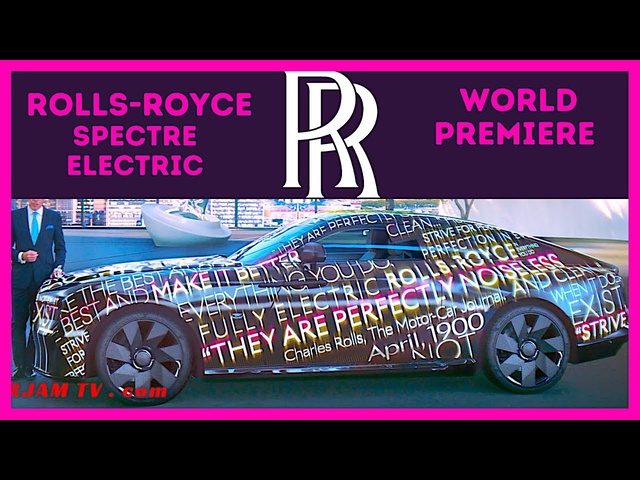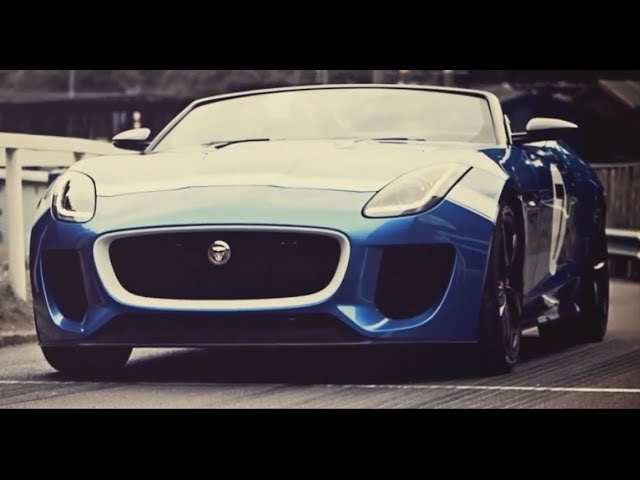Views: 7516
Mercedes Advanced Self Driving Safety Innovations Origins Video Mercedes Self Drivng Car 2019
Demonstrating How Class Leading Mercedes Safety Advanced Driving Safety Innovations Origins Are - Great Video Watch in UltraHD + SUBSCRIBE #CARJAMTV
CARJAM TV - Subscribe Now
Website: http://www.carjamtv.com
Sensors: The Mercedes S-Class uses a total of six radar sensors, plus one long-range and one short-range infrared sensor. New improved versions of the short-range and long-range Mercedes radars combine with a new multi-mode radar to detect relevant obstacles such as vehicles or people in defined areas in front of, next to and, now, behind the vehicle, too Many of the assistance systems from Mercedes-Benz work in this way, fusing multiple data sources to ensure more reliable operation.
Mercedes Distronic Plus with Steering Assist: This radar-based function has now been enhanced by the addition of Steering Assist, which helps drivers to stay centered in their lane by generating the appropriate steering torque. The Mercedes stereo camera recognizes lane markings as well as vehicles driving ahead together with their three-dimensional positioning, and relays this information to the electric steering assistance system. When driving at slow speeds, e.g. in congested traffic, Steering Assist can use the vehicle ahead as a means of orientation, enabling Mercedes semi-autonomous following even when there are no clear lane markings visible. Mercedes DISTRONIC PLUS with Steering Assist can be activated as before with a lever on the steering column in a speed range from 0 – 200 km/h. Mercedes Drivers must keep their hands on the steering wheel at all times even when Steering Assist is activated, as the function only works in bends above a certain, speed-dependent radius.
Mercedes BAS Plus with Cross-Traffic Assist: can also come to the driver's aid when there is a risk of a collision with cross traffic at junctions. Mercedes Auto Brake Assist BAS PLUS will step in by automatically boosting brake pressure for effective emergency braking, even applying the brakes at full power if necessary. Applying just the right amount of braking power for the situation at hand
Mercedes Pre-Safe with pedestrian detection and City Brake function Thanks to the combination of stereo camera and radar sensors, it is now possible to detect pedestrians in front of the vehicle. Visual and acoustic warnings are triggered when a hazard is spotted. If the driver then reacts by braking, the braking power will be boosted by Mercedes BAS PLUS as the situation requires, right up to a full brake application. Should the driver fail to react, Mercedes PRE-SAFE Brake triggers autonomous vehicle braking. The Mercedes PRE-SAFE Brake with pedestrian detection is active up to approx. 72 km/h, and is able to prevent collisions with pedestrians autonomously from an initial speed of up to 50 km/h.[14]
Mercedes Pre-Safe Plus: offers an extension of the familiar occupant protection measures in situations where traffic behind poses a danger. A Mercedes radar sensor in the rear bumper monitors the traffic behind the vehicle. If the risk of an impact from the rear is detected, the rear hazard warning lights are activated to alert the driver of the vehicle behind (not on vehicles with USA/Canada coding). Apart from this, the PRE-SAFE® anticipatory occupant protection measures, such as the reversible belt tensioners, are deployed. Plus, if the Mercedes is stopped and the driver indicates a wish to remain stationary – by depressing the brake pedal, for example, activating the HOLD function or moving the selector lever to "P" – PRE-SAFE® PLUS will also come to the driver's aid by increasing the brake pressure in order to keep the vehicle firmly braked during a possible rear-end collision.
Mercedes Pre-Safe Impulse: at an early phase of the crash, before the resulting deceleration starts to increase, the front occupants are pulled away
The Mercedes W126 series premiered in September 1979, launching in March 1980 as an 1980 model and late 1980 as a 1981 model in the US and Australia replacing the Mercedes W116 line. The Mercedes W126 line featured improved aerodynamics and enlarged aluminum engine blocks. In Australia in 1981, the W126 Mercedes S-Class won Wheels magazine's Car of the Year award. The Mercedes W126 was manufactured from 1979 through 1991 with a mid-cycle update. Mercedes Coupé models based on the Mercedes S-Class were reintroduced with the Mercedes W126 (Mercedes 380 500 SEC). Total sales of the W126 Mercedes S-Class sedans reached 818,036 units, with an additional 74,060 Mercedes coupes sold.
In 1991, the Mercedes W140 series replaced the Mercedes W126 line with the first production model assembled in April of that year. The Mercedes W140 grew in proportions and featured two wheelbase lengths and a shorter-wheelbase W140 Mercedes coupé.
The Mercedes-Benz W222 is the version of the Mercedes-Benz S-Class produced since 2013, and the successor of the Mercedes-Benz W221. The Mercedes W222 inspired by the Mercedes-Benz F700 concept car.
CARJAM TV - Subscribe Now
Website: http://www.carjamtv.com
Sensors: The Mercedes S-Class uses a total of six radar sensors, plus one long-range and one short-range infrared sensor. New improved versions of the short-range and long-range Mercedes radars combine with a new multi-mode radar to detect relevant obstacles such as vehicles or people in defined areas in front of, next to and, now, behind the vehicle, too Many of the assistance systems from Mercedes-Benz work in this way, fusing multiple data sources to ensure more reliable operation.
Mercedes Distronic Plus with Steering Assist: This radar-based function has now been enhanced by the addition of Steering Assist, which helps drivers to stay centered in their lane by generating the appropriate steering torque. The Mercedes stereo camera recognizes lane markings as well as vehicles driving ahead together with their three-dimensional positioning, and relays this information to the electric steering assistance system. When driving at slow speeds, e.g. in congested traffic, Steering Assist can use the vehicle ahead as a means of orientation, enabling Mercedes semi-autonomous following even when there are no clear lane markings visible. Mercedes DISTRONIC PLUS with Steering Assist can be activated as before with a lever on the steering column in a speed range from 0 – 200 km/h. Mercedes Drivers must keep their hands on the steering wheel at all times even when Steering Assist is activated, as the function only works in bends above a certain, speed-dependent radius.
Mercedes BAS Plus with Cross-Traffic Assist: can also come to the driver's aid when there is a risk of a collision with cross traffic at junctions. Mercedes Auto Brake Assist BAS PLUS will step in by automatically boosting brake pressure for effective emergency braking, even applying the brakes at full power if necessary. Applying just the right amount of braking power for the situation at hand
Mercedes Pre-Safe with pedestrian detection and City Brake function Thanks to the combination of stereo camera and radar sensors, it is now possible to detect pedestrians in front of the vehicle. Visual and acoustic warnings are triggered when a hazard is spotted. If the driver then reacts by braking, the braking power will be boosted by Mercedes BAS PLUS as the situation requires, right up to a full brake application. Should the driver fail to react, Mercedes PRE-SAFE Brake triggers autonomous vehicle braking. The Mercedes PRE-SAFE Brake with pedestrian detection is active up to approx. 72 km/h, and is able to prevent collisions with pedestrians autonomously from an initial speed of up to 50 km/h.[14]
Mercedes Pre-Safe Plus: offers an extension of the familiar occupant protection measures in situations where traffic behind poses a danger. A Mercedes radar sensor in the rear bumper monitors the traffic behind the vehicle. If the risk of an impact from the rear is detected, the rear hazard warning lights are activated to alert the driver of the vehicle behind (not on vehicles with USA/Canada coding). Apart from this, the PRE-SAFE® anticipatory occupant protection measures, such as the reversible belt tensioners, are deployed. Plus, if the Mercedes is stopped and the driver indicates a wish to remain stationary – by depressing the brake pedal, for example, activating the HOLD function or moving the selector lever to "P" – PRE-SAFE® PLUS will also come to the driver's aid by increasing the brake pressure in order to keep the vehicle firmly braked during a possible rear-end collision.
Mercedes Pre-Safe Impulse: at an early phase of the crash, before the resulting deceleration starts to increase, the front occupants are pulled away
The Mercedes W126 series premiered in September 1979, launching in March 1980 as an 1980 model and late 1980 as a 1981 model in the US and Australia replacing the Mercedes W116 line. The Mercedes W126 line featured improved aerodynamics and enlarged aluminum engine blocks. In Australia in 1981, the W126 Mercedes S-Class won Wheels magazine's Car of the Year award. The Mercedes W126 was manufactured from 1979 through 1991 with a mid-cycle update. Mercedes Coupé models based on the Mercedes S-Class were reintroduced with the Mercedes W126 (Mercedes 380 500 SEC). Total sales of the W126 Mercedes S-Class sedans reached 818,036 units, with an additional 74,060 Mercedes coupes sold.
In 1991, the Mercedes W140 series replaced the Mercedes W126 line with the first production model assembled in April of that year. The Mercedes W140 grew in proportions and featured two wheelbase lengths and a shorter-wheelbase W140 Mercedes coupé.
The Mercedes-Benz W222 is the version of the Mercedes-Benz S-Class produced since 2013, and the successor of the Mercedes-Benz W221. The Mercedes W222 inspired by the Mercedes-Benz F700 concept car.
Make: Mercedes
More by CARJAM TV
-
 2023 Rolls-Royce Spectre Electric World Premier ...
2023 Rolls-Royce Spectre Electric World Premier ...
 Rolls Royce
Views: 5345
Rolls Royce
Views: 5345 -
 BMW Electric Hydrogen Car Commercial 2013 Carjam ...
BMW Electric Hydrogen Car Commercial 2013 Carjam ...
 BMW
Views: 26137
BMW
Views: 26137 -
 2014 Jaguar F Type V8S T7 HD Full Speed Loud ...
2014 Jaguar F Type V8S T7 HD Full Speed Loud ...
 Jaguar
Views: 3274
Jaguar
Views: 3274 -
 New Audi R18 QUATTRO Cool 2013 Commercial Le Mans ...
New Audi R18 QUATTRO Cool 2013 Commercial Le Mans ...
 Audi
Views: 64075
Audi
Views: 64075





